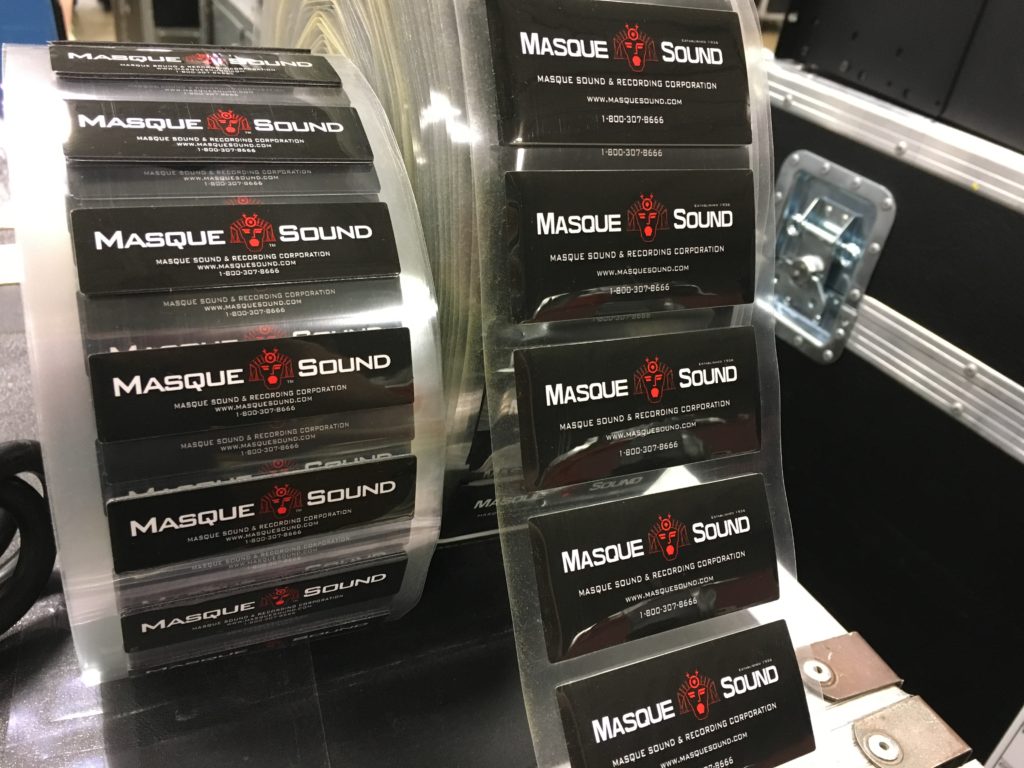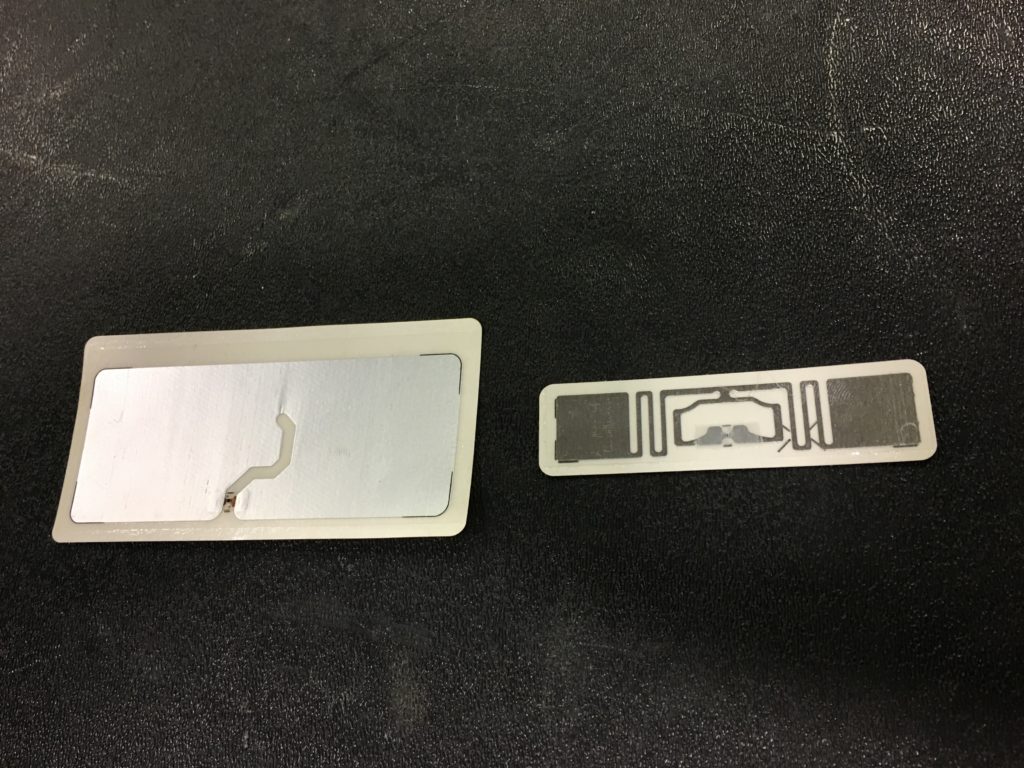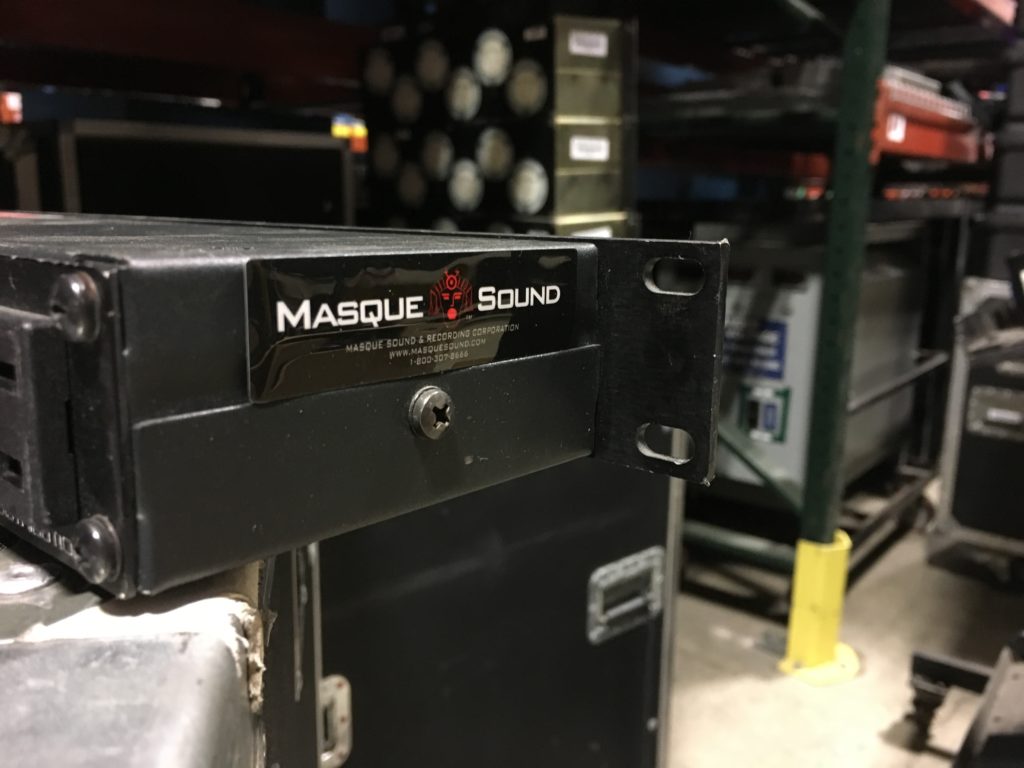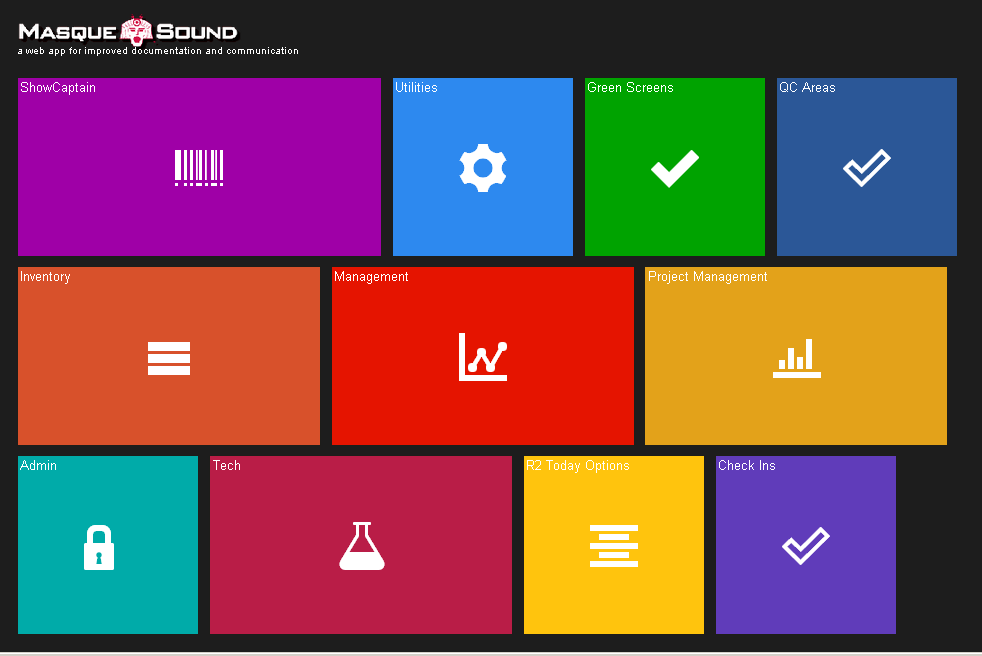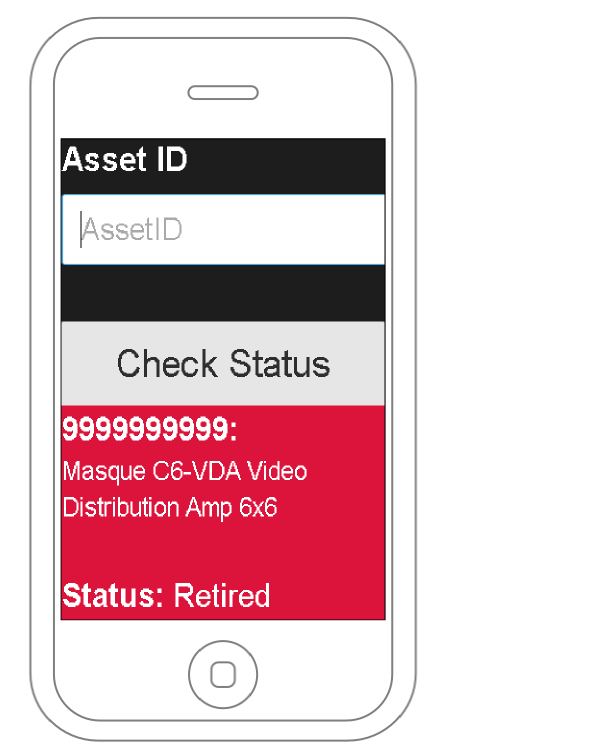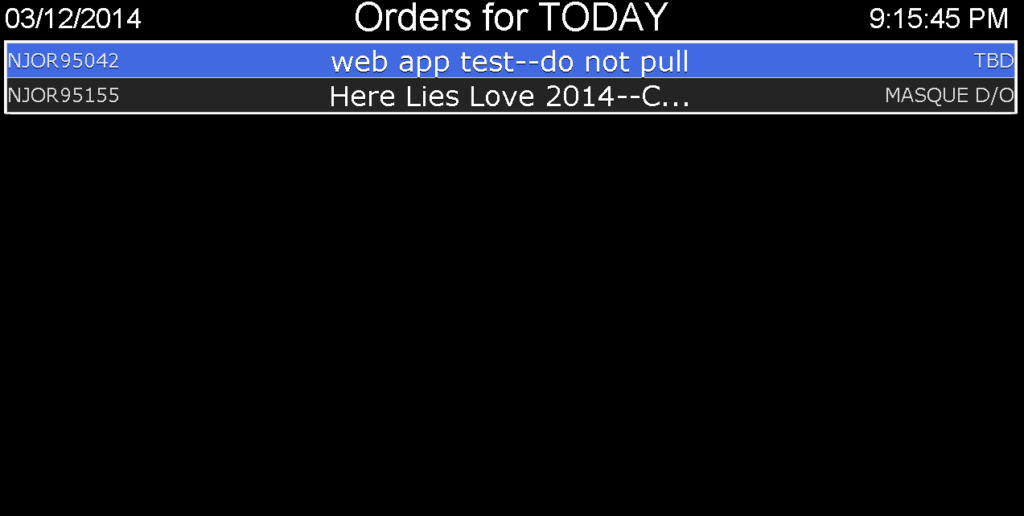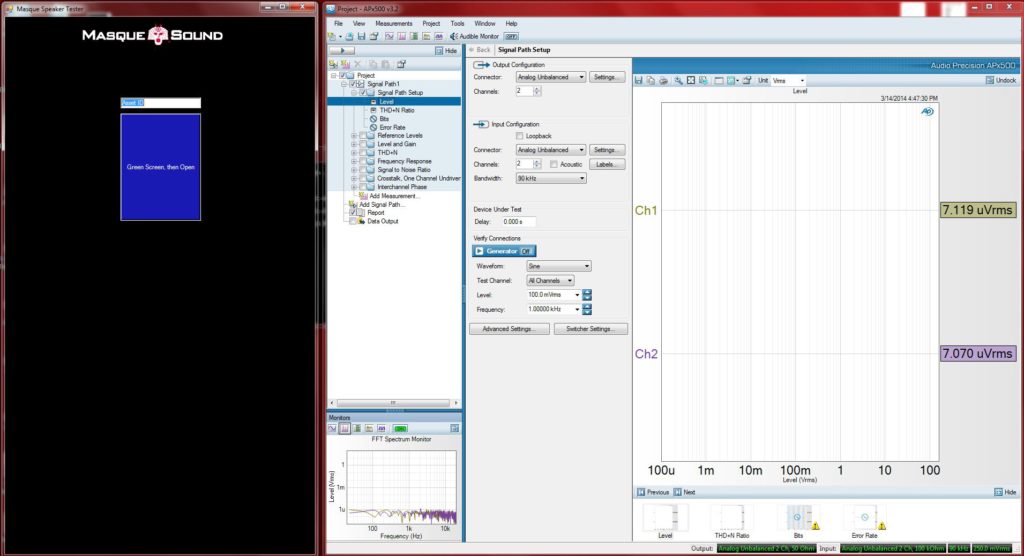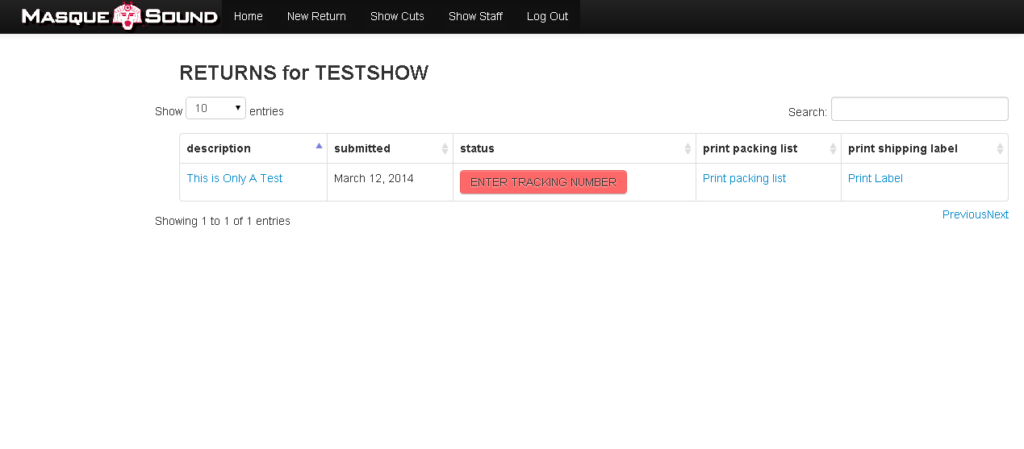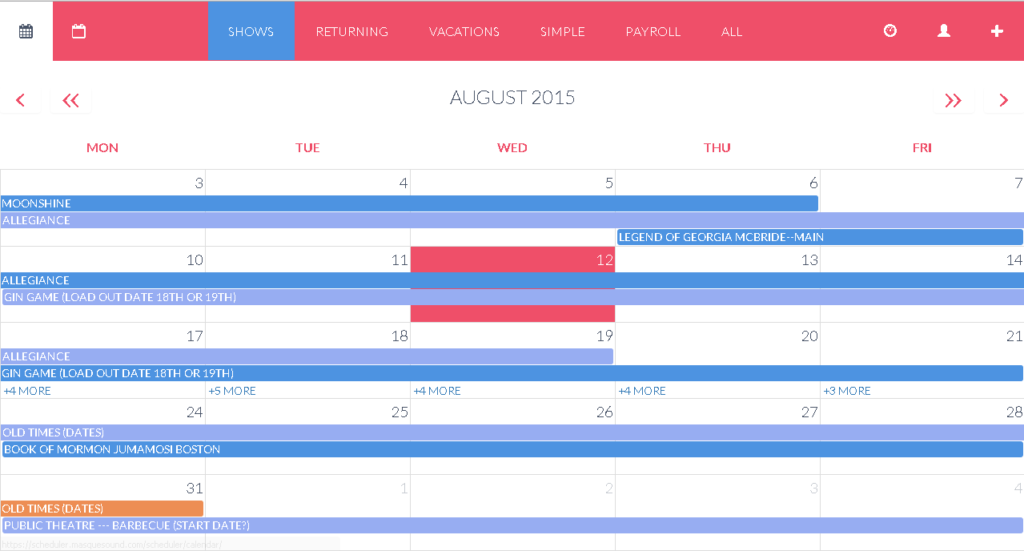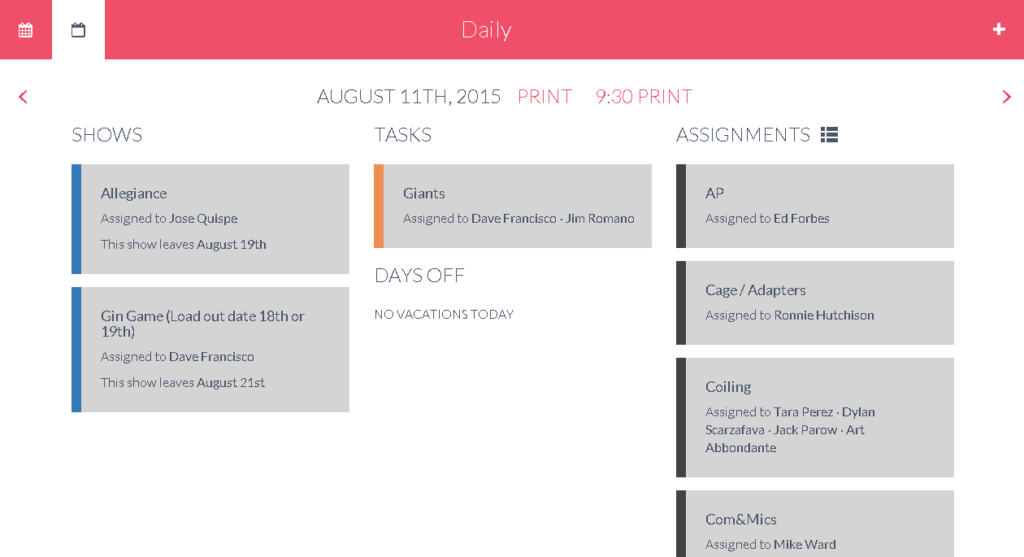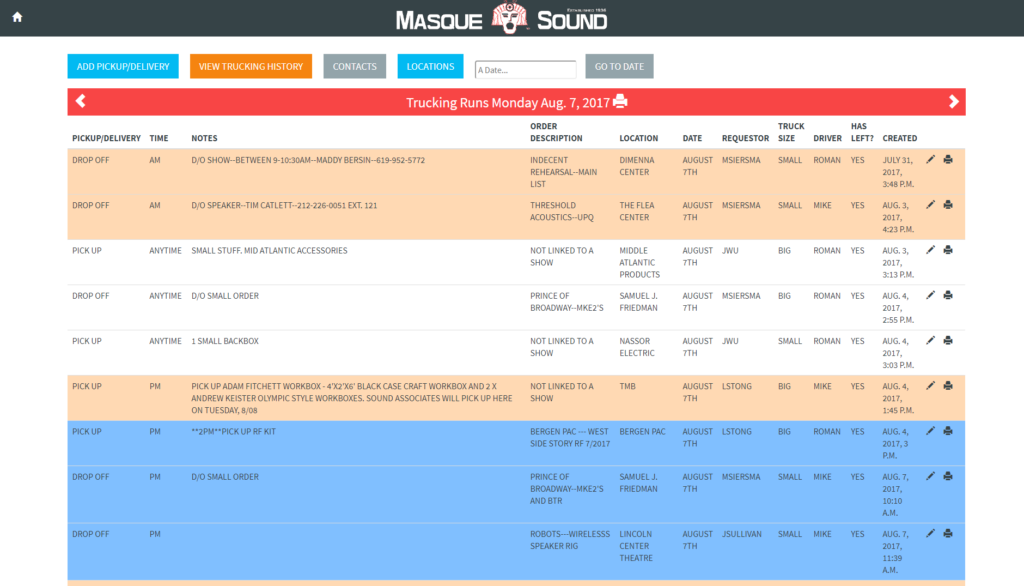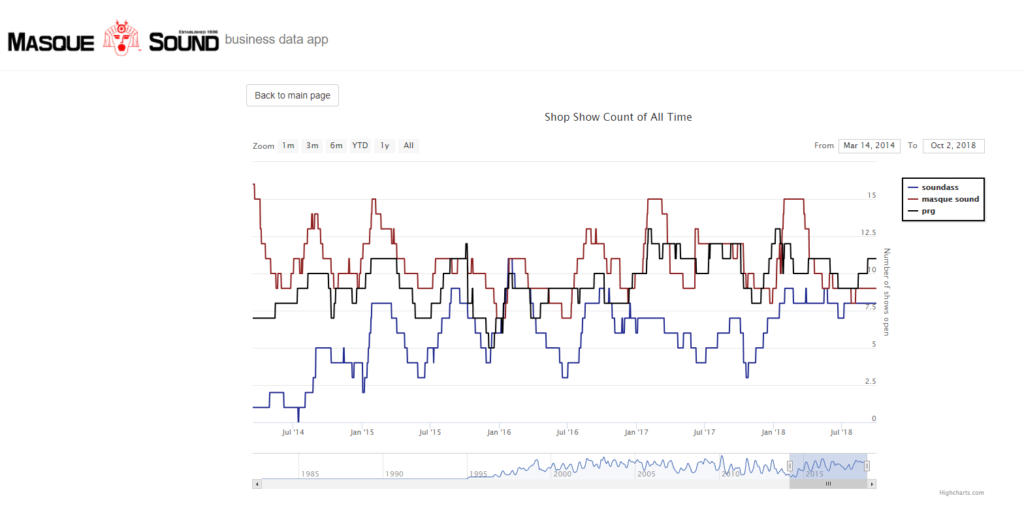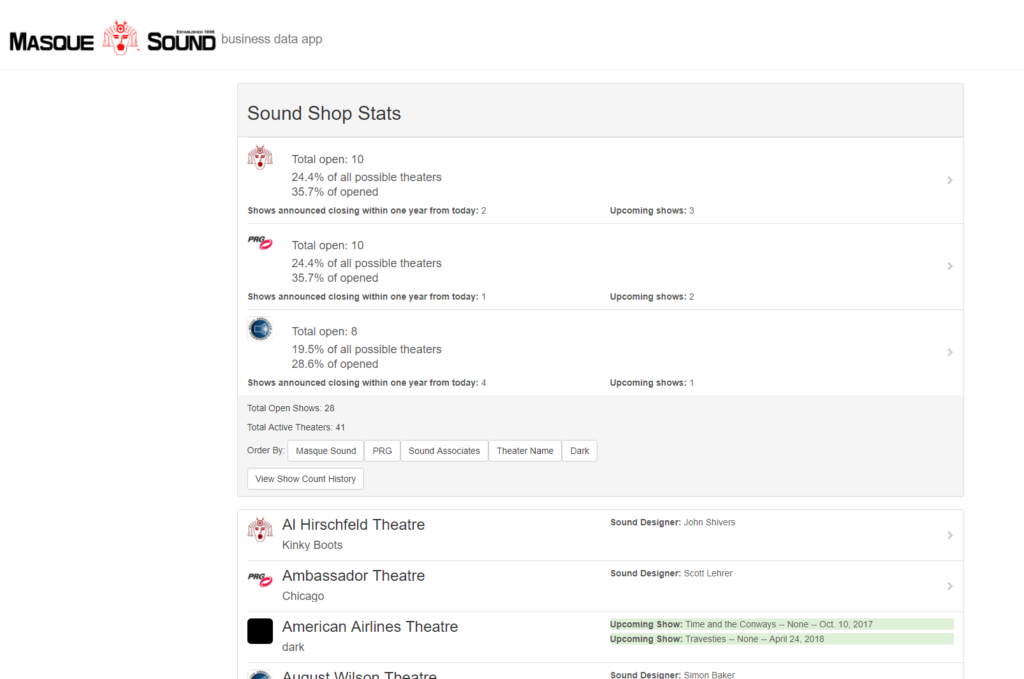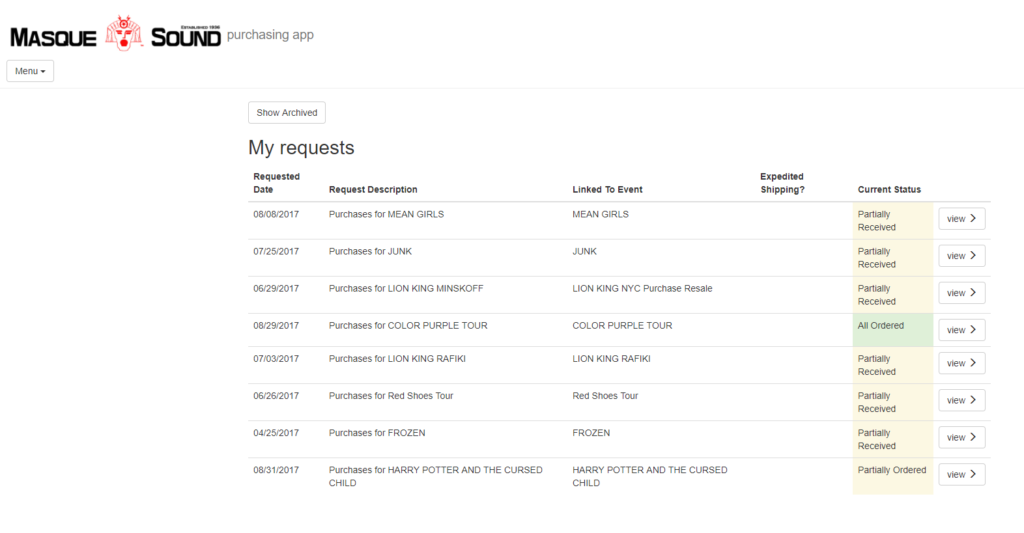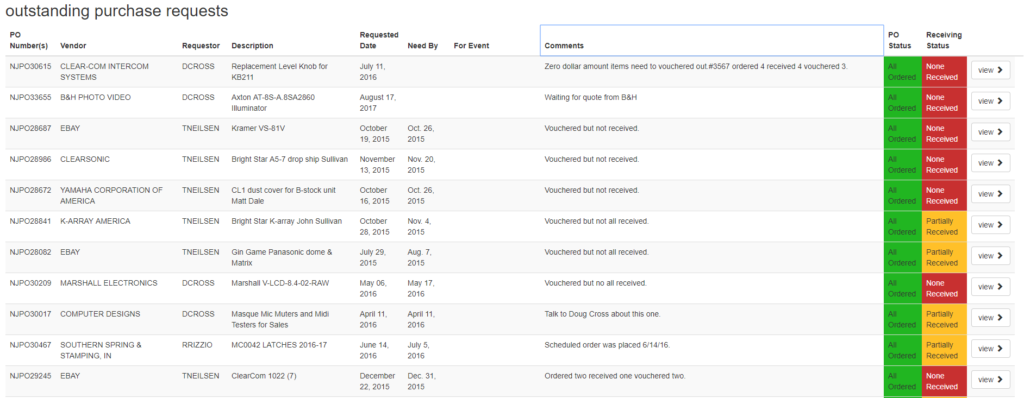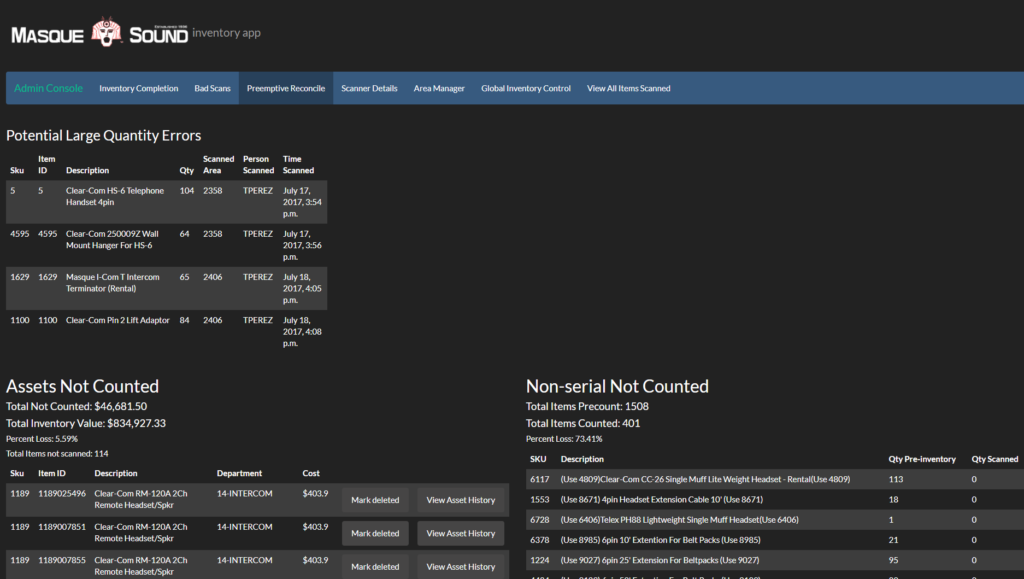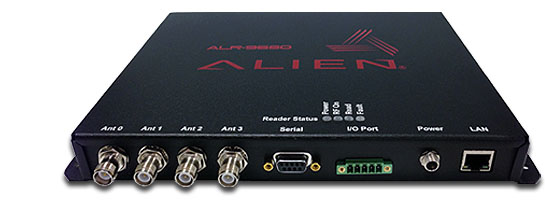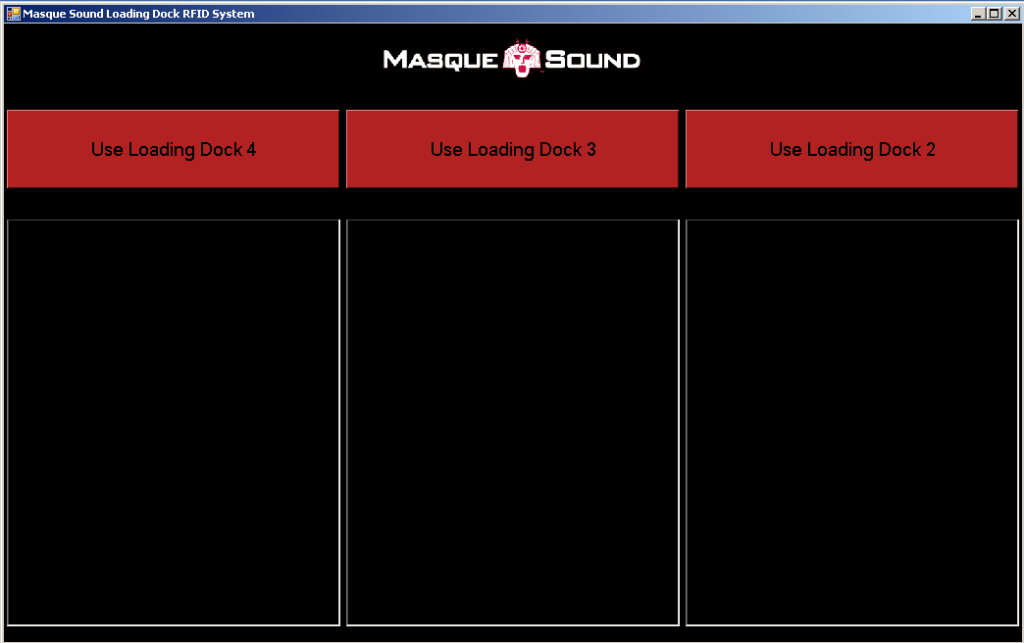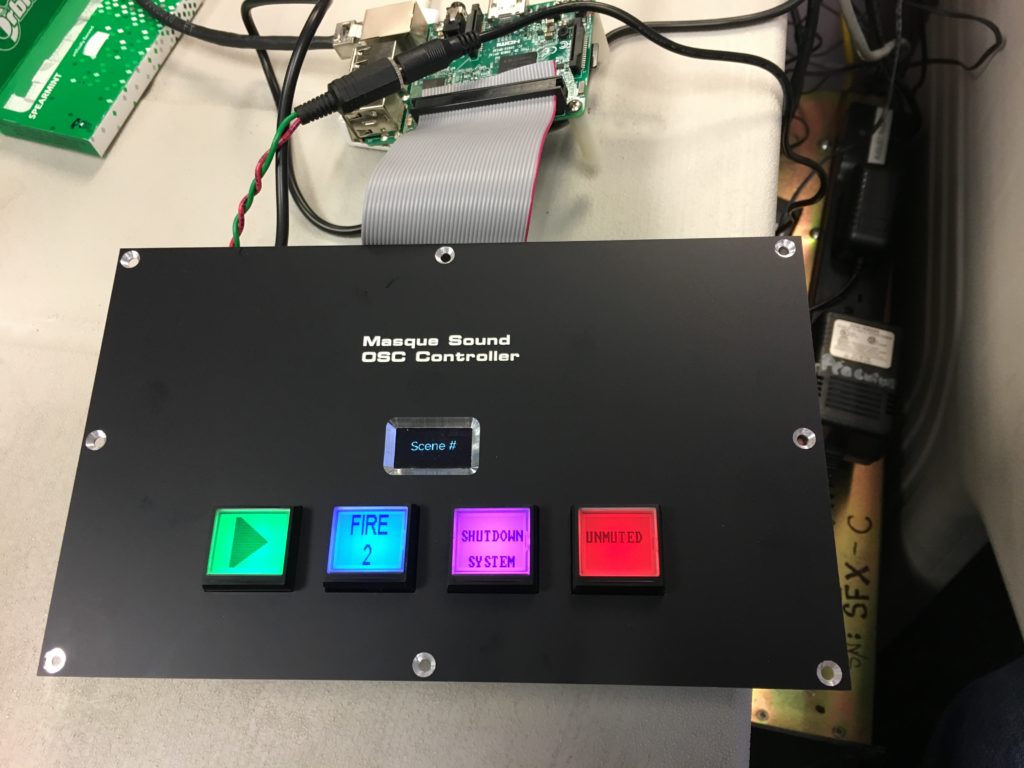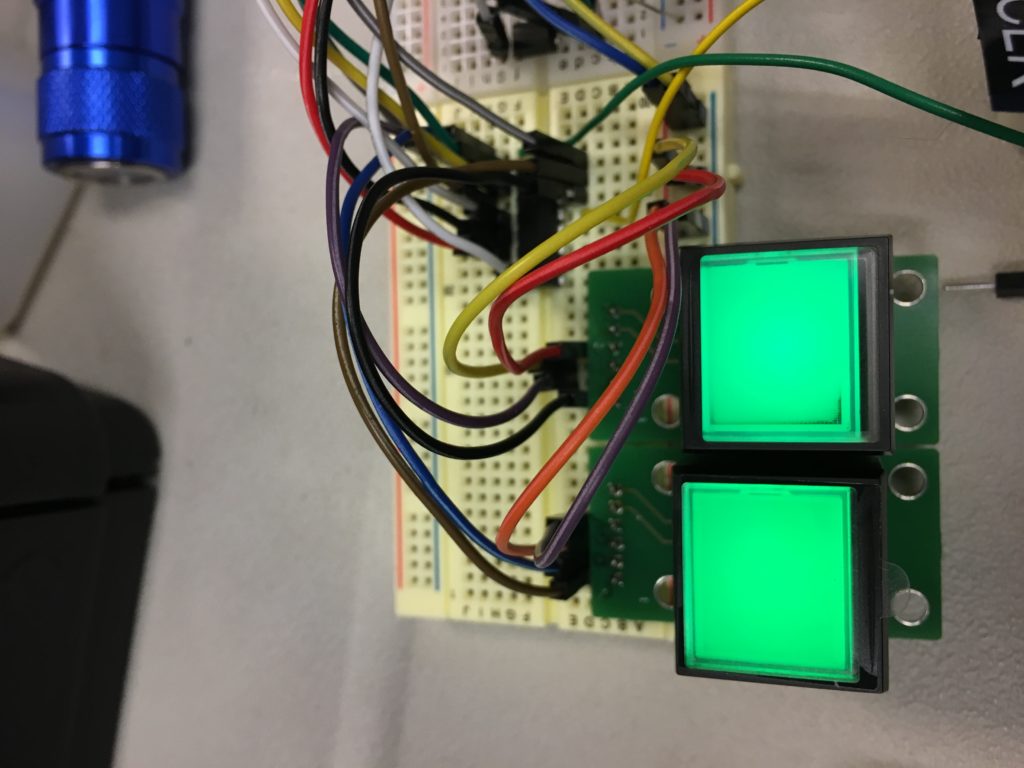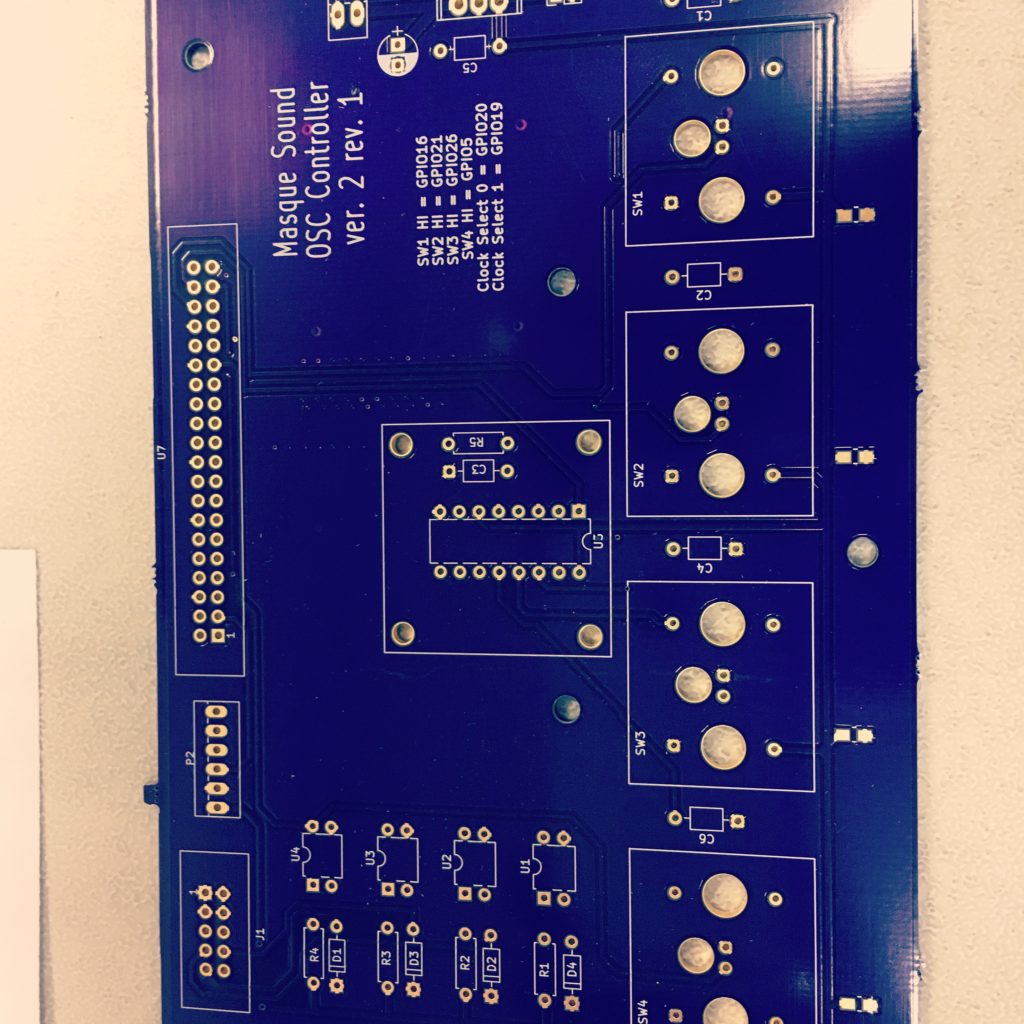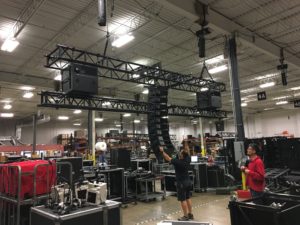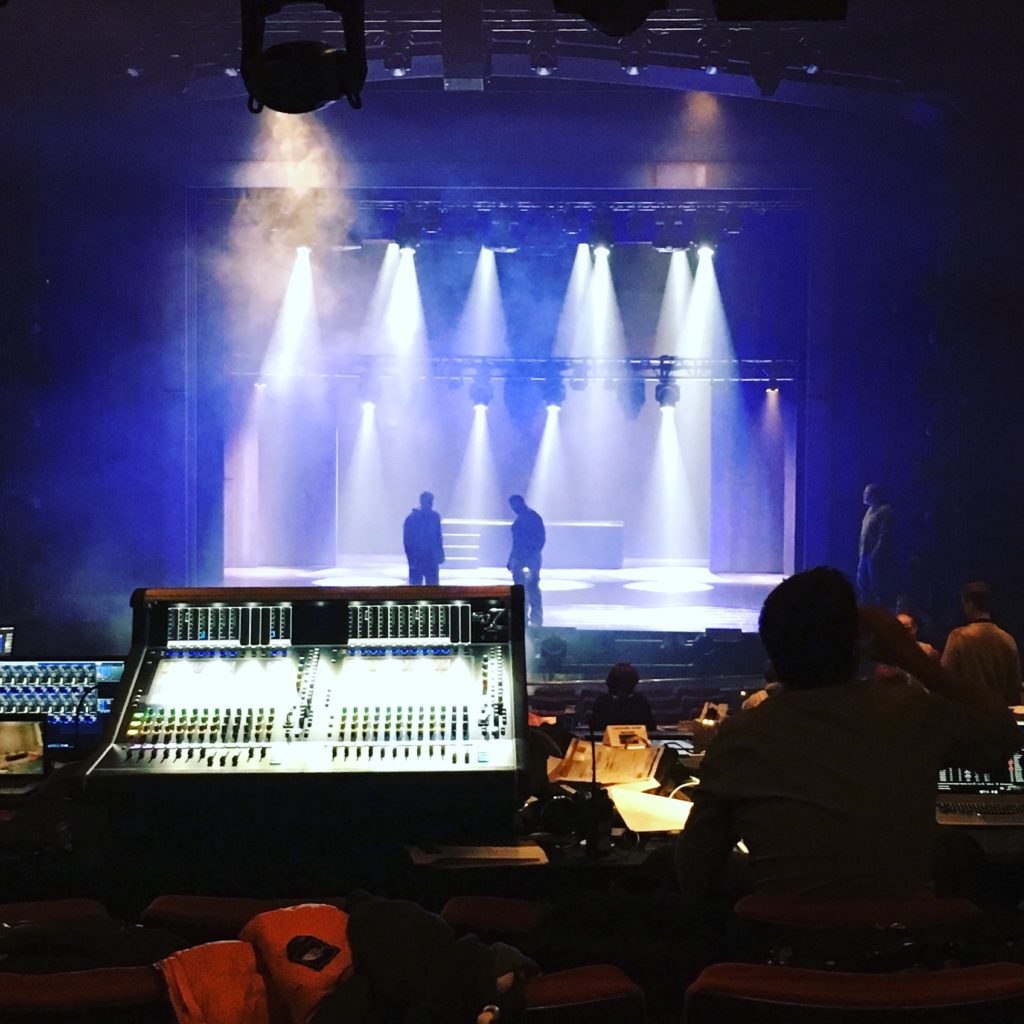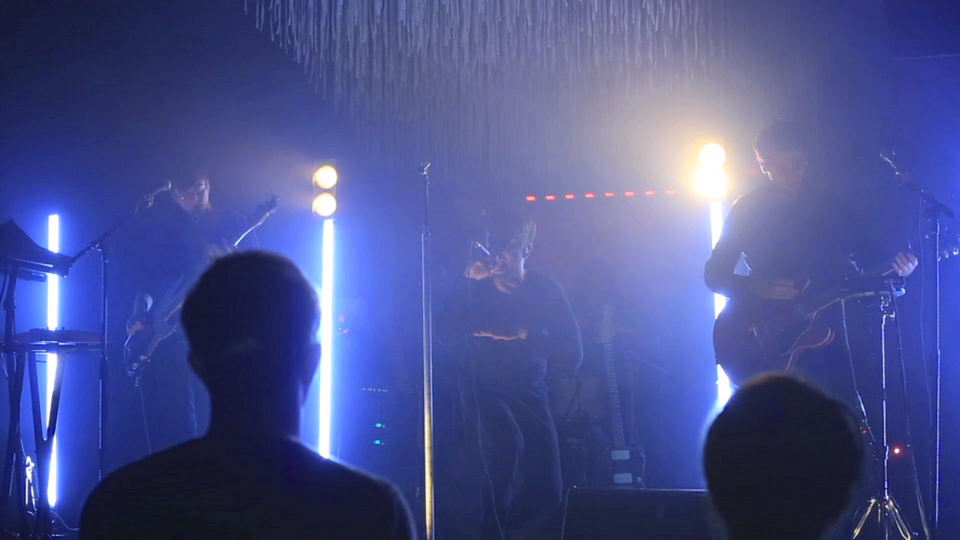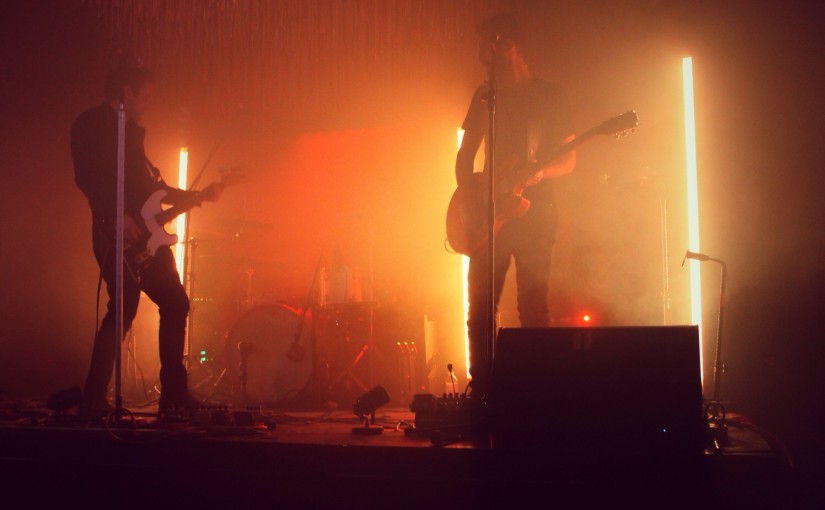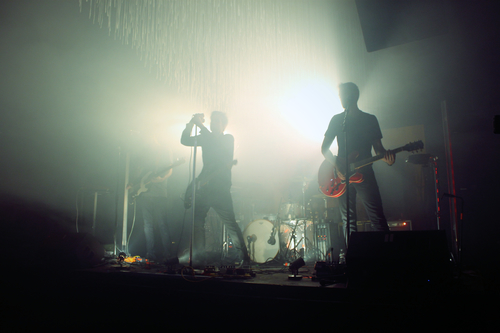The Masque RFID concept started with George Hahn(the Masque Sound Director of Production) asking me to research various handheld long-range RFID readers to use throughout the Masque Sound warehouse. What this research helped me discover was the world of UHF RFID inventory systems. I designed a system that uses fixed readers rather than mobile readers that interrogate tags and record their locations to a PostgreSQL database and provide real-time alerts to workers for issues that the system finds.
That system description sounds simple enough, but it took a lot of asking “why” to get the results that George was looking for. He was looking for a way to catch items that were not correctly scanned to a given show as a show was being loaded onto a truck. His original plan included a handheld “wand” that would interrogate tags and would respond with their inventory status. By moving this idea to a multiple fixed reader system, I was able to add another, more valuable(in hindsight) feature of asset location logging.
The search for both readers and tags was a long one. Tags needed to be durable, small, versatile and cheap. This requirement set wasn’t able to be satisfied with just one type of tag in the end. Since Masque Sound owns a lot of metal rack mount assets, which are generally at least 1 3/4″ tall, we found a “universal” tag made by Metalcraft that read over 15 feet from a reader, and was small enough to fit on the side of a 1 rack unit asset. It also allowed us to install the tags on other small metal assets, like direct boxes, LCD monitors and mixing consoles. 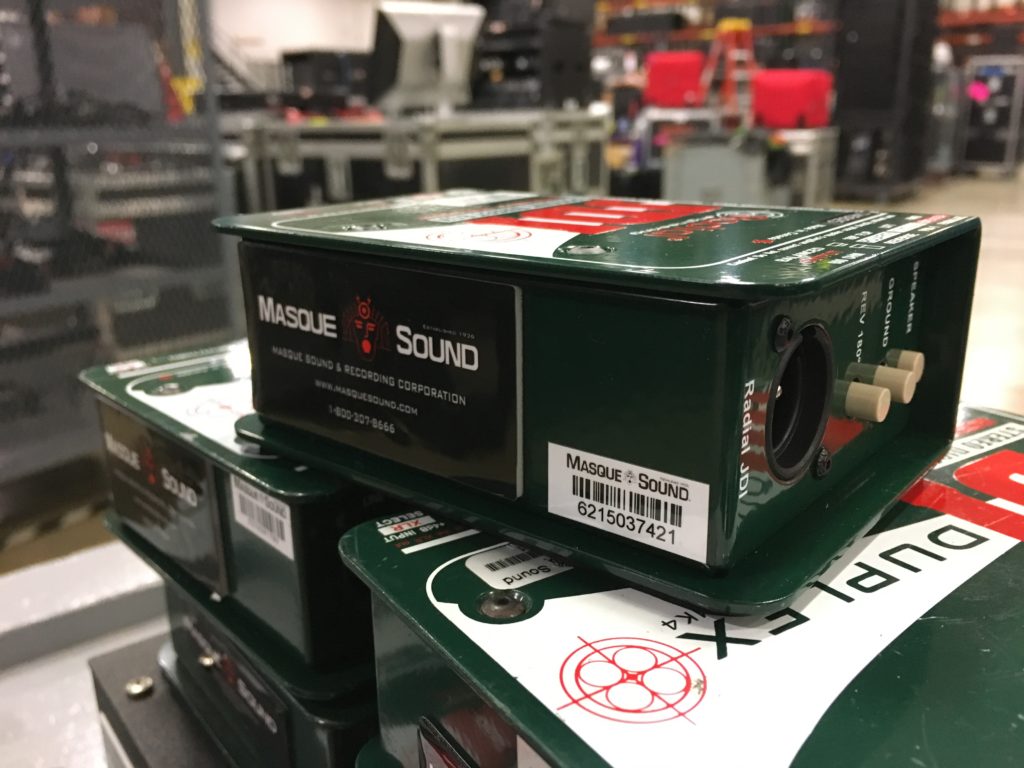
For our large road cases, we found a very cheap paper tag in the “wet inlay” format, which read from over 15 feet from a reader and had a very large antenna surface area. These tags, from Avery Dennison RFID, are installed underneath the carpet lining of each road case that Masque owns. These tags are very durable due to their hidden installed location, and the large surface area of the antenna. These tags will not read when installed on a metal asset, but they are much cheaper than the “universal” metal-mount tags.
For the smaller niche assets where the larger tags don’t fit, we use a smaller “universal” tag from Metalcraft and a smaller tag from Avery Dennison RFID. These tags read over 10 feet away, but they work well in our environment.
See further posts on how this system integrates with all others in the Masque Sound Warehouse.
